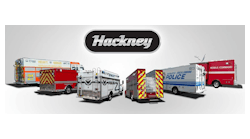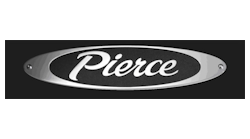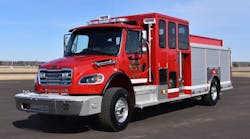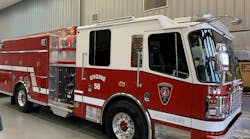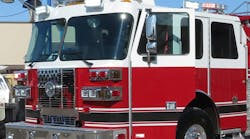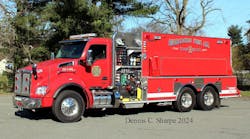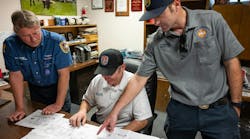Ferrara: An apparatus manufacturer will need to do both. The assembly-line units will enable them to provide lower-cost units to budget restricted communities while also being able to meet the needs of specialized custom units of the future.
E-One: The fire departments are really in control of this. The real issue is cost. E-One has the capability to build both custom and the more standard unit. In the long run, pre-engineered units with a vast array of options will be the basis for ordering a fire apparatus vehicle. This will allow manufacturers to streamline production while allowing each fire departments some customization options to fit their specific needs.
Crash Rescue: I think you will see more modular design. This allows for more customization at the cost of savings of assembly-line production.
Smeal: This will always be a "custom-built" industry. If there is one constant in this industry, it is the fact that no two fire districts are the same. With this in mind, each department will continue to demand a unique truck that fits the individual needs of the district.
KME: Even though the industry sways back and forth between the "custom" and "assembly-line" types of apparatus, I don't feel that the industry will ever lock in on one or the other. There will always be fire departments that specify what they need to respond in their specific areas and there will also always be fire departments that will purchase primarily on budget, which will leave open the "assembly-line" market.
Hackney: There will always be "custom" fire apparatus in America. However, the nature or definition of custom is changing. Custom no longer means "nothing standard." Today, we see custom meaning "mandatory equipment accommodations." At Hackney, typically custom means how wide and tall are the specific compartment requirements; what type of shelves, trays or partitions are required in each compartment; and where will the major equipment components be installed?
Pierce: The level of customization is entirely dependent on the customer. Fire departments will drive the trend in this. For larger manufacturers, "mass customization" will set the standard for the manufacturing process - streamlined, efficient production with the ability for vast amounts of customization. Fire apparatus are the most highly customized trucks in the world, and manufacturers will focus on serving that need with efficient production methods to ensure value for the buyer.
Saulsbury: The production of units will depend on the requirements of the customer. Units that are of a standard design can follow an "assembly-line" style of production to be more cost competitive. The units that require customization and do not fit standard designs of manufacturing will require a custom style of production and more cost.
American LaFrance: I believe that cost, technology and compliance with mandated safety requirements will ultimately drive the need to become more standardized. However, being more standardized does not dictate an assembly-line mentality. Freightliner and American LaFrance both utilize an assembly line to produce their highly customized vehicle chassis and cabs. It's the unique design of our documentation and support systems that allows each customer to "have it their way." Ultimately, how each manufacturer develops their own processes will dictate the rigidity of their designs.
Is there any other aspect of apparatus design and manufacture that you would like to comment on?
Crash Rescue: I think the biggest change in the future will be cab and body design as new materials will allow for more flexible shapes. Drivetrain lay-outs (such as hydraulic or electric drive) will allow for all major components to be completely repositioned for best use of space, weight and distribution and function.
Pierce: The recent introduction of multiplex wiring systems will revolutionize fire apparatus operation. As users learn its capabilities, a whole new development cycle will begin. It will allow a higher degree of safe aerial operation. It will also allow for better distribution of vehicle operation information around the apparatus and reduce confusion on complicated trucks. Troubleshooting of electrical failures will be easier with improved diagnostics.
Saulsbury: As stated earlier, the use of the pumper/rescue has increased greatly. One trend that we are seeing an increase in is the rear-mounted pump. This design can adapt to both the city and rural requirements. The city departments can design a smaller, more maneuverable design without compromising storage space for equipment. The rural departments can design a unit for use of more storage space and more specialized equipment without having to increase the dimensional sizes of a midship pumper design.
American LaFrance: American LaFrance is committed to applying its full technological and customer support resources to help the fire and emergency services meet today's and tomorrow's challenges. Safety is an issue that we will not compromise and, in fact, plan to revolutionize. Our commitment to cab testing and the transfer of safety, comfort and performance advancements from our heavy truck experience will continue into the 21st century.
Hackney: The evolution of the fire apparatus we see in America today, whether it be a pumper, aerial or rescue, is the result of ideas posed by the fire department, the end user. Very few innovations can actually be attributed to a manufacturer. They were ideas that were requested by the fire department on that new apparatus that the manufacturer determined to be a good idea. Thus, that manufacturer incorporated it into the next truck, his competitor saw it and incorporated into his design, and so forth. A smart manufacturer is one who listens and responds.
Smeal: Departments need to decide what is really necessary on the apparatus that they are purchasing. Too often, departments want to put 10 pounds of sugar in a five-pound bag. Another area is ergonomics. This is the "catchword" of the '90s but it will be the design change of the new millennium. Increased insurance costs and the rising number of worker's comp claims will demand that manufacturers design and build apparatus in an ergonomic fashion that is operator friendly.
KME: Fire department personnel should always look at the specific needs for their future apparatus acquisitions and go to at least one trade show to look at all of the new technology available to address these needs. Also, talk to apparatus manufactures to discuss and package your departments specific requirements into a functional and practical configuration. Finally, if you keep hearing that what you want cannot be done, stop by the KME booth and look me up.
Related:

